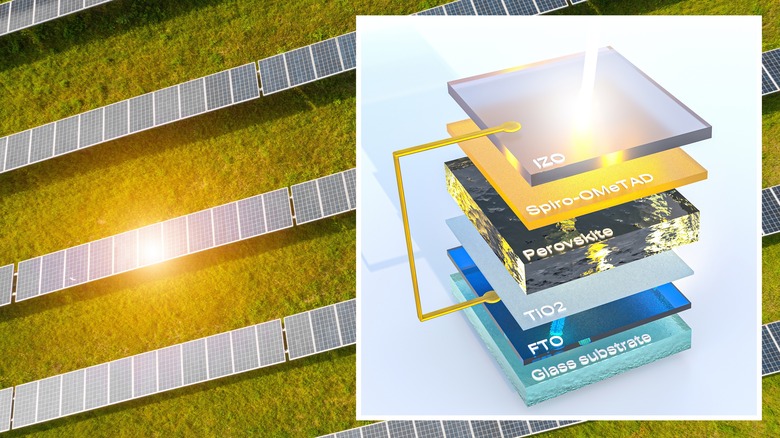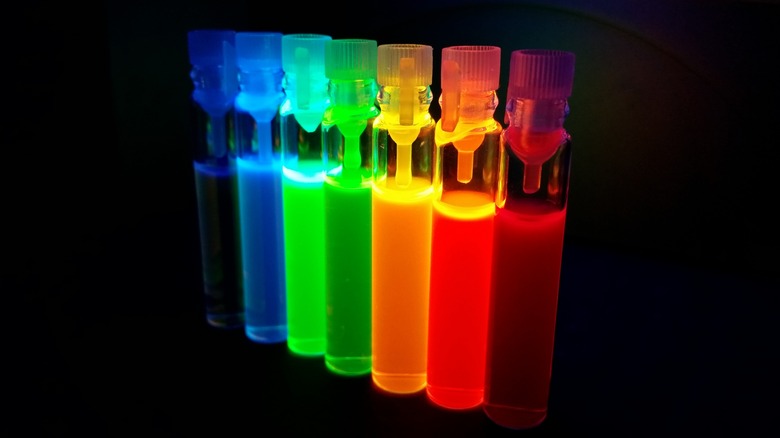Perovskite Solar Cells: What Are They & How Do They Work?
Modern consumer solar technology offers quite a bit of variety, from standard panel designs with silicon materials to thin-film alternatives made of cadmium. So, what's all this about perovskite solar cells? Do we really need another kind of solar to decide on?
Despite sounding like a made-up word that Fenton Crackshell might exclaim before turning into Gizmoduck, perovskite solar cells are real and show a lot of promise. In basic terms, perovskite solar cells are just what they sound like; they are solar cells made using perovskites instead of the more commonly used silicon materials found in most photovoltaic solar energy systems. In this instance, "perovskites" is a blanket term applied to a variety of materials, specifically because of their structural likeness to the mineral perovskite.
Functionally, perovskite solar panels aren't that different from other thin-film solar panels. When incorporated into a solar cell structure, these perovskites convert photons into electricity. That electricity can then be channeled into batteries for storage or directly into certain devices, and so on. Perovskites have been a part of solar research for over a decade, with a wide range of elements and element combinations being explored in order to better refine the technology. The aim is to increase efficiency and reduce potential environmental impacts. With enough time and refinement, perovskite solar panels could theoretically replace current solar technology.
What makes perovskite solar cells special?
The reason so many researchers have been trying to refine the perovskite solar cell formula for so long comes down to two main benefits. Specifically effectiveness and affordability.
In lab testing, perovskite solar cells have been able to reach an efficiency rating of over 25 percent, making them arguably the most energy-efficient thin-film panels to date. However, that efficiency is too short-lived to be viable for modern solar panel replacement. According to the U.S. Department of Energy, early perovskite cells would start to degrade in less than a single day — sometimes within minutes — while more recent attempts have extended some cells' lifespans up to a few months.
Perovskite solar cells are also expected to be relatively inexpensive to produce, in theory, which would make them even more of a direct competitor to today's common solar panel technologies. The catch is that, so far, the production methods used in testing labs wouldn't really work on an assembly line to mass produce the panels. So, in addition to needing to figure out a way to greatly improve perovskite solar cell lifespans, large-scale manufacturing processes also need to be sorted out.
Can you buy perovskite solar panels?
In short, no, you can't buy perovskite solar panels. It's probably going to be a while yet before perovskite solar panels become available at the commercial level. Georgia Tech engineers have managed to figure out that the combination of exposure to both water and oxygen is causing rapid degradation — and that eliminating exposure to one would more or less halt the rapid degradation process. However, the methods used to protect the perovskites from one element lead to entirely new hurdles, such as light reducing the effectiveness of the protective barrier.
Ongoing issues of efficiency and relatively low durability have to be addressed before perovskite solar cells have any chance of ending up on store shelves. Extending a cell's overall life expectancy from minutes to months is a great accomplishment, but these cells will need to hold up for decades – roughly 20 to 30 years – to have a shot at commercial viability.
While it's unlikely that we'll see perovskite solar technology in Home Depot within the next year or two, that doesn't mean never. A lot of progress has been made since the concept's introduction, so it's reasonable to assume that the right solutions will eventually be found. It's also possible that before standalone perovskite solar cells hit the market, we could see something similar used as part of tandem solar cells that would combine the materials with silicon solar cells to bolster energy production.


